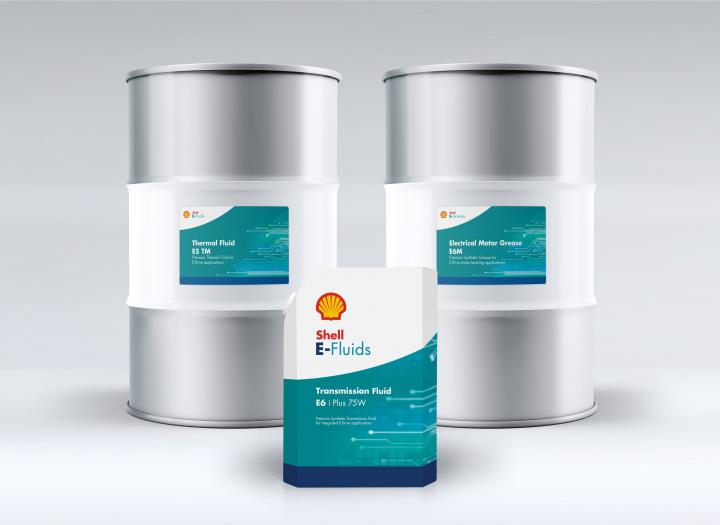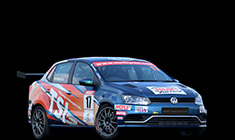News
What are the various lubrication points & areas in a motorcycle?
For example, the front brake bite & juddering issue on my Hero Xpulse 200 was resolved by just lubricating the pivot point of the front brake lever.
BHPian Gordon recently shared this with other enthusiasts.
YouTube Searches
Almost 90% of the articles and videos that show up when searching for motorcycle lubrication are related to chain cleaning, chain lubing and a lot of biased/unbiased reviews of the chain-related products.
Authorized Service Center
Moreover, I do not trust any authorized service center to actually lubricate all pivot points and cables as instructed in the service manual (free or otherwise).
A simple personal experience at the ASC
I recently had some biting issues with the front brake on my Xpulse 200, wherein at low speeds when applying the front brake, it would somewhat judder and not bite properly. I raised it to the service advisor and technician during the paid quarterly service at the ASC. Nothing was done to improve the situation.
I wondered if it could be air in the brake fluid, or the pads are worn out, or the disc has worn out or worse the MC-kit needs to be replaced.
Local hero does the job
Finally visited my local mechanic, he took a short test ride, applied a few drops of oil to the pivot point of the front brake lever and that's it. It's working wonderfully.
Shouldn't this have been managed in the ASC Service, where post-washing they should have lubricated all the points. At every service, there is a consumables charge for such lubrication, yet nothing was done.
No specific thread on Motorcycle Lubrication on Team-BHP either
Rolling on this thread, so we can share some DIY information and safety measure in the same regards to the below (and not limited to):
- What are the general points to cover? Lever pivots, cables, springs, carb/fi-cable points, keyholes, etc.
- What lubricant do you use? Gear Oil, Grease, a specific product?
- What about more complex technical points such as axle, swingarm bushes, bearings, etc?
- How do you manage these tasks?
Here's what BHPian hgps had to say about the matter:
Interesting question, something I never thought about even though I take care of some lubrication needs of my bike myself.
- The brake judder you faced is quite familiar to me. I face this frequently on my CBR250R and 650F. Every time this happens, I remove the brake lever, clean the pivot pin and apply a fresh layer of 'multipurpose' grease. I believe hydrophobic grease would be better but I never researched. My regular grease does the job for a few months. This problem has reduced quite a bit after I stopped getting my bike washed outside. I now wash it myself, with a Mug and bucket, No pressure washing and Avoid washing the pivot points (T-Stem, brake lever and pedals etc). Post washing, wiping with a damp cloth does the trick.
- Ignition keyhole - I used to apply regular gear oil, but recently started experimenting with graphite powder (crushed pencil lead). Results are good enough.
- Fuel tank cap - A drop of gear oil in the keyhole and the latches inside.
- Rusted bolts - Remove them and apply WD40, then I wipe them clean, apply some gear oil, wipe again and put them back in.
- Gear oil for chain lube, regular multipurpose grease for brake/clutch lever/caliper pin. Graphite powder for the ignition lock cylinder.
- I have never lubricated the swingarm, suspension bush etc. I convince myself saying that the odo isn't high enough on my bikes for it. But the actual reason is the lack of competent mechanics willing to do so for me. However, wheel bearings get lubricated with regular 'multipurpose' grease during tyre change. None of my bikes had their bearings replaced so far.
I do all the lube work mentioned above myself. As none of it requires the removal of the swingarm or suspension components.
Here's what BHPian aargee had to say about the matter:
- You've covered almost all of them, perhaps side & main stands, footrests; thumb rule: moveable parts.
- Grease is used where the temperature would shoot high & chances of oil evaporation; oil is used otherwise; WD40 where there're plenty of chances of water damaging the parts, especially electricals {key hole, switches}; chain lube course is used with chains.
- Front & rear axles are lubed once in 50-60K Km {on CBR}; same goes with my Yamaha & trust the same.
- Owner's manual {periodic maintenance table} + service booklet + ASC & of course online automotive forums.
Here's what BHPian adrian had to say about the matter:
Two points from my experience
- The keyhole being equipped with a drain system, little benefit is achieved in lubricating the same. Of course, you can use contact cleaner spray like zorrick. But the best effect is achieved if you dismantle and clean the corroded contact points.
- The new generation cables are equipped with a self-lubricating inner layer, dust-proof nipples on both ends and a plastic pivot on the cable edges. As such they are maintenance-free. Oiling the new cables with just attract dust and it won't add any benefits to the operation.
The swing arm bolt / bushes (other than plastic ones) / spacer, axle and bearings should be dismantled, cleaned and lubricated for attaining the best results. No shortcuts to that.
Check out BHPian comments for more insights and information.
News
Brands of spares, oil etc. from the vintage & classic era
By 1974-78 all the foreign oil companies Burmah Shell, Esso, Caltex and Mobiloil (a smaller player) operating in India were nationalised.
BHPian anjan_c2007 recently shared this with other enthusiasts.
To start with the thread, information about the erstwhile oil companies operating in India collected from either their respective websites or from Wikipedia or from personal knowledge is provided in a nutshell.
By 1974-78 all the foreign oil companies Burmah Shell, Esso, Caltex and Mobiloil (a smaller player) operating in India were nationalised. Apart from Indian Oil Corporation (estd 1959) that was the only Indian government owned oil company as a PSU, we saw Bharat Petroleum and Hindustan Petroleum getting established after the takeover by our government of the then operating, foreign oil companies operations in India. Indian Oil Corporation was earlier known as Indian Oil Company, but in 1964 after the Indian Refineries merger with the former, the name got changed to Indian Oil Corporation.
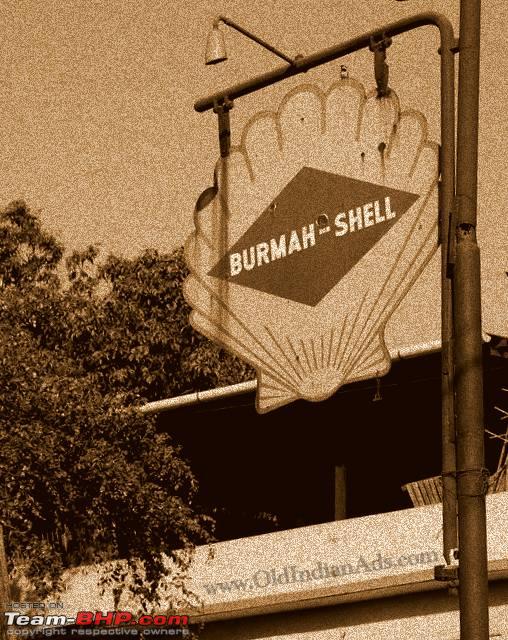
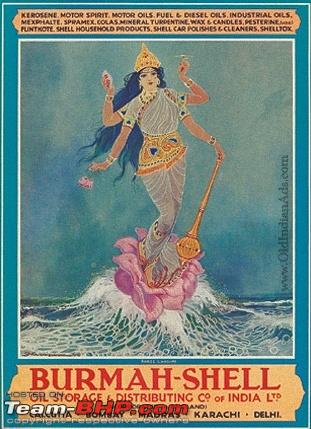
Above: A 1941 Burmah Shell logo.

The Burmah Oil Company was a leading British oil company. In 1966, Castrol was acquired by Burmah, which was renamed as "Burmah-Castrol". It operated as a joint venture named Burmah-Shell with Shell in the rest of India, but in Assam, Burma and in the then East Pakistan it operated under the name BOC (Burmah Oil Company). At the international level, BP Amoco (now British Petroleum (BP)) purchased the company in 2000. In India on 24 January 1976, Burmah Shell was taken over by the Government of India to form Bharat Refineries Limited as a PSU. We know it better as Bharat Petroleum now.

Esso's predecessor was Standard Oil of New Jersey after the breakup of the original Standard Oil company in 1911. The company adopted the "Esso" (the phonetic pronunciation of the company's initials, "Standard Oil", S.O.), which was later objected to by the other Standard Oil companies. Standard Oil of New Jersey started marketing its products under the Esso brand in 1926. In 1972, the name Esso was largely replaced in the U.S. by the Exxon brand after the Standard Oil of New Jersey bought Humble Oil, while the Esso name remained widely used elsewhere. In most of the world, the Esso brand and the Mobil brand are the primary brand names of ExxonMobil, with the Exxon brand name in use only in the United States alongside Mobil.
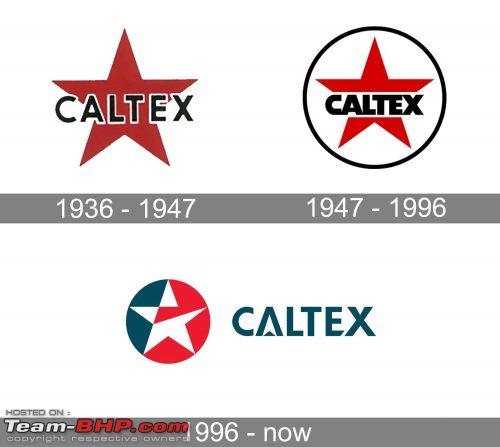
In India we have seen the first two Caltex logos only as the last one came into being in 1997.
Caltex is an American oil company, which was formed in 1936 in Texas, and today operates in the Middle East and Asia-Pacific region, being one of the largest players in the market. Despite the fact, that the Caltex brand is widely known as the most popular petroleum company of the Middle East, it was born in America and its visual identity is a tribute to the company’s roots and history.
The redesign of 1947 kept the red star and black lettering but emboldened and modernized their contours. The new structure was placed on a white background and enclosed into a thin black circular frame. The inscription was now executed in a stylized Extra Bold sans-serif with massive heavy shapes of the letters. The star, as well as the brand’s color palette — red, white and blue — is a celebration of the company’s heritage and a tribute to the USA and to the forming company Texaco.
HPCL was incorporated in 1974 after the takeover and merger of erstwhile Esso Standard and Lube India Limited by the Esso (Acquisition of Undertakings in India) Act 1974. Caltex Oil Refining (India) Ltd viz. (CORIL) was also taken over by the Government of India in 1976 and merged with HPCL in 1978.


The 1959 logo.
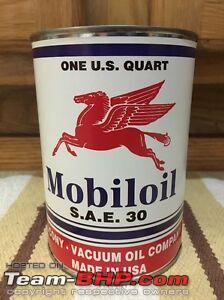
Mobil SAE 30 lubricant.

Mobil TT oil for motorcycles and racing cars.
In 1955, Socony-Vacuum was renamed Socony Mobil Oil Company. Socony stands for Standard Oil Company of New York, formed in 1911 from Standard Oil after its break-up. In 1963, it changed its trade name from "Mobiloil" to simply "Mobil", introducing a new logo. To celebrate its 100th anniversary in 1966, "Socony" was dropped from the corporate name. Mobil continues to operate as a major brandname of ExxonMobil within the ExxonMobil Fuels, Lubricants & Specialties division.
Mobiloil had a lesser number of petrol and diesel dispensing units in India as compared to Burmah Shell and Esso, but nevertheless was a dominant player in the motor oils or lubricants market. It was so dominant as a player that many old generation drivers or chauffeurs referred to engine oil as mobil oil. So for example, "Sir, we need to fill up the mobil oil in our car", was too common to hear from them. Its akin to the word "Jeep" as we know, which has become a synonym for 4 WD light motor vehicles.
As a common feature, the foreign oil companies were liberal with gifts to their customers in the form of penstands, desk and wall calendars, desk diaries , pens, yo-yo's (I may still have one of these from Esso) and so on.
Some brand advertisements from the past:
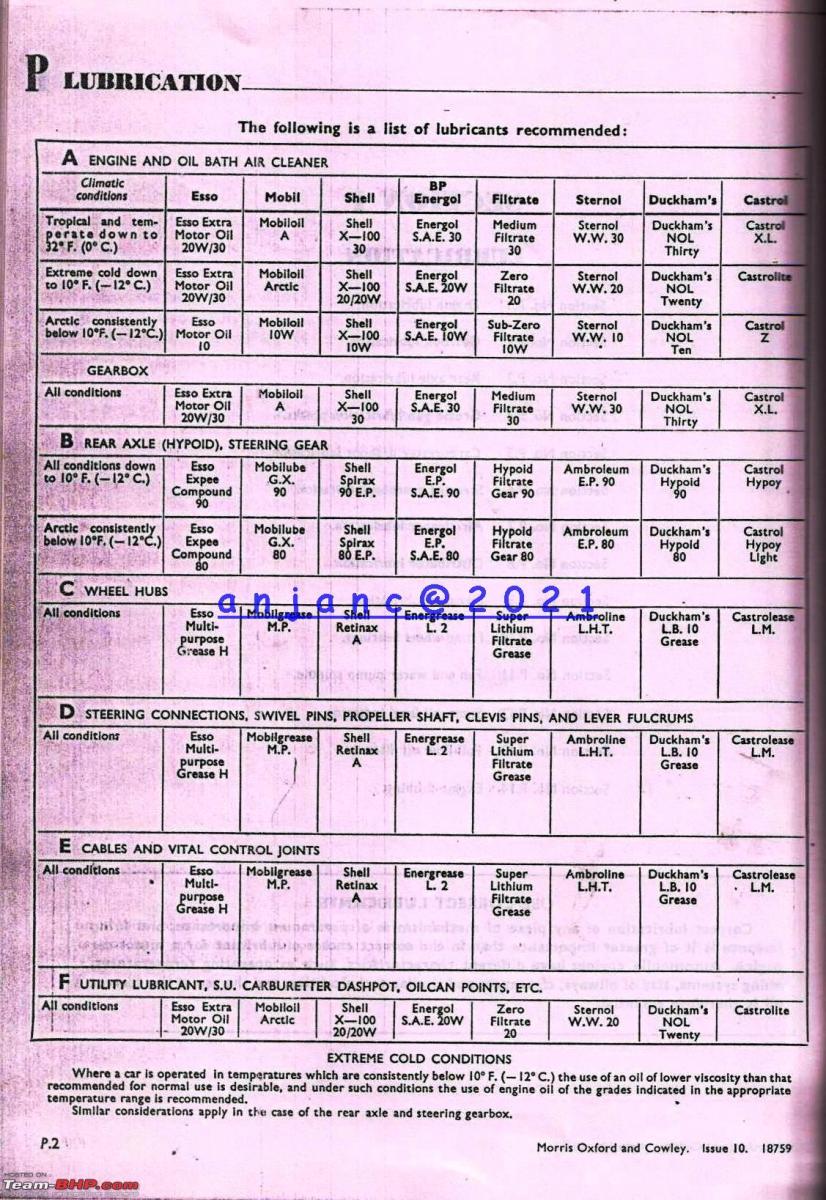
From the workshop manual listing makes of oils/lubricants for the Morris Oxford Series II, III (also used by HM dealers for Landmaster, Ambassador) and Cowley.

The RE 4 Kirloskar diesel engine that was the most preferred as aftermarket for Willys and Jeep class post oil shock of 1973.

November 1979 advt of Goodyear tyres.

December 1980 advt of Dunlop tyres.

Simpson & Co. aftermarket diesel most preferred for mini trucks and also for the older Chevrolet, Ford, Dodge, Fargo and GMC trucks that survived the oil shock.
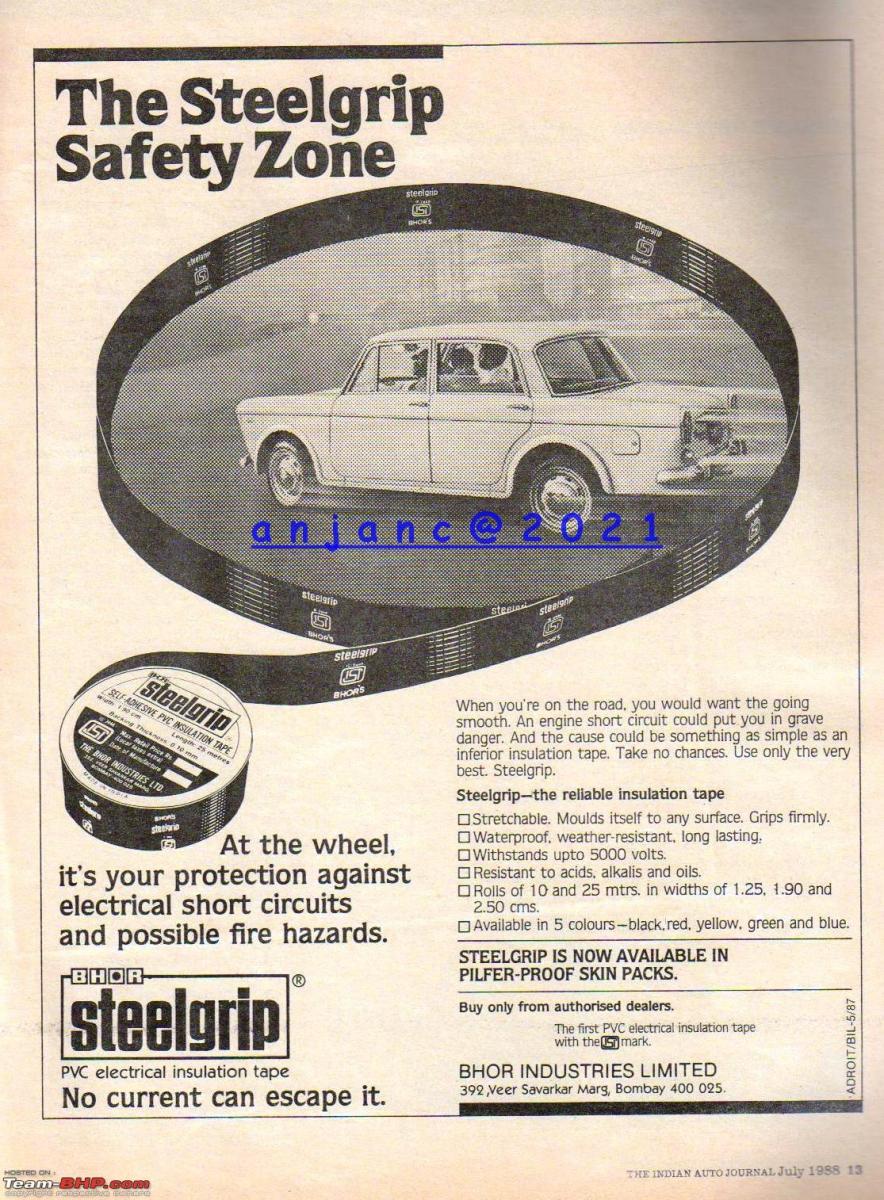
The adhesive tape that is still available (from the late 1980"s).

HP lubricating 2T oil advt from the late 1980's - now becoming scarce.

A late 1980's advt by SAFEX safety glasses.

Castrol GTX late 1980's advt.
Continue reading on brands of spares, oil etc. from the vintage & classic era for BHPian comments, insights and more information.
- Tags:
- Indian
- Spare parts
- Oil
- Lubricants
- vintage
- classic
News
Shell launches e-fluids for electric vehicles
Shell has launched e-fluids for electric vehicles (EVs). These include E-Transmission and E-Thermal Fluids and E-Greases.
According to Shell, lubricants developed for internal combustion engines are not suitable for use in electric vehicles. The company claims that the E-Fluids optimize the performance of EVs. The ultra-low viscosity fluids are claimed to reduce the lifecycle emissions of EVs, extend their lifespans and increase vehicle efficiency.
The EV market is said to be growing at 40-50% per year. According to the International Energy Agency estimates, there could be 280 million EVs on the roads by 2040.
- Tags:
- Indian
- Electric Vehicle
- Lubricants
News
Maruti launches ECSTAR lubricants, coolant & car care brand
Maruti Suzuki has launched ECSTAR - Suzuki's global brand of lubricants, coolant and car care products in India. The range of products on offer includes an injector cleaner, automatic transmission oil, underbody coat and screen wash. More products are expected to be added later. Initially, ECSTAR products will be offered at NEXA service workshops and later at Maruti's 3,000+ workshops across India.
Maruti will source the products from select local suppliers. The company also claims that ECSTAR engine oil goes through more than 20 tests such as high speed tests, friction tests, deposit tests and brake specific fuel consumption (BSFC) mapping that measures frictional loss behaviour and efficiency improvement. Over 8,000 hours of engine level testing is followed by 1,60,000 km of vehicle level testing.
ECSTAR was launched by the Suzuki in Japan back in 1984. At present, it is sold in markets across Europe, America, Mexico, Australia and South East Asia.
- Tags:
- Indian
- ECSTAR
- Lubricants
News
Repsol enters Indian lubricant market
GP Petroleums, a subsidiary of the Gulf Petrochem Group, has launched the Repsol brand in India.
Last year, GP Petroleums and Repsol had entered into a strategic partnership which gave GP Petroleums the exclusive right to manufacture and market Repsol's line of lubricants in India.
Repsol will focus on the automotive lubricant market including the two wheeler market in India. This is also the world's largest two-wheeler market, accounting for 33% of the world's two-wheelers. The emerging premium and top-end motorcycle segments will be catered to as well.
The company is also looking to garner a significant share in the passenger cars and heavy duty vehicle segments in the coming years.
Repsol will be launching its full range of products in the Indian market. These include synthetic, synthetic blend and premium mineral based oil products to cater to two wheelers, passenger cars and heavy duty vehicles.
- For two-wheelers - Repsol Moto Rider 4T 10W-30, JASO MA2
- For passenger cars - Repsol Elite Neo XTI 5W-40, API SN - fully synthetic
- For heavy duty vehicles - Repsol Diesel Turbo THPD MID SAPS XTI 15W-40, API CJ4
Further, the company will introduce a mineral oil product for scooters - Repsol Motomatic 10W-30, JASO MB.
All the products come with additive packages.
Gulf Petrochem plans to have a dedicated team and network to service the Repsol brand in India.
- Tags:
- Indian
- Repsol
- Synthetic oil
- Lubricants












